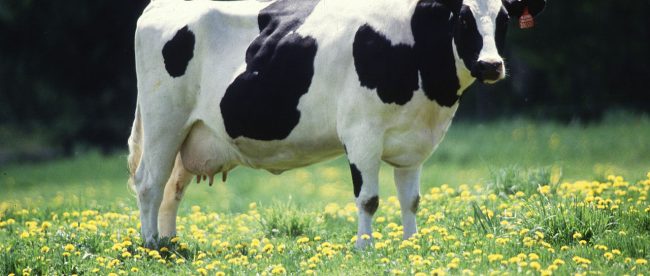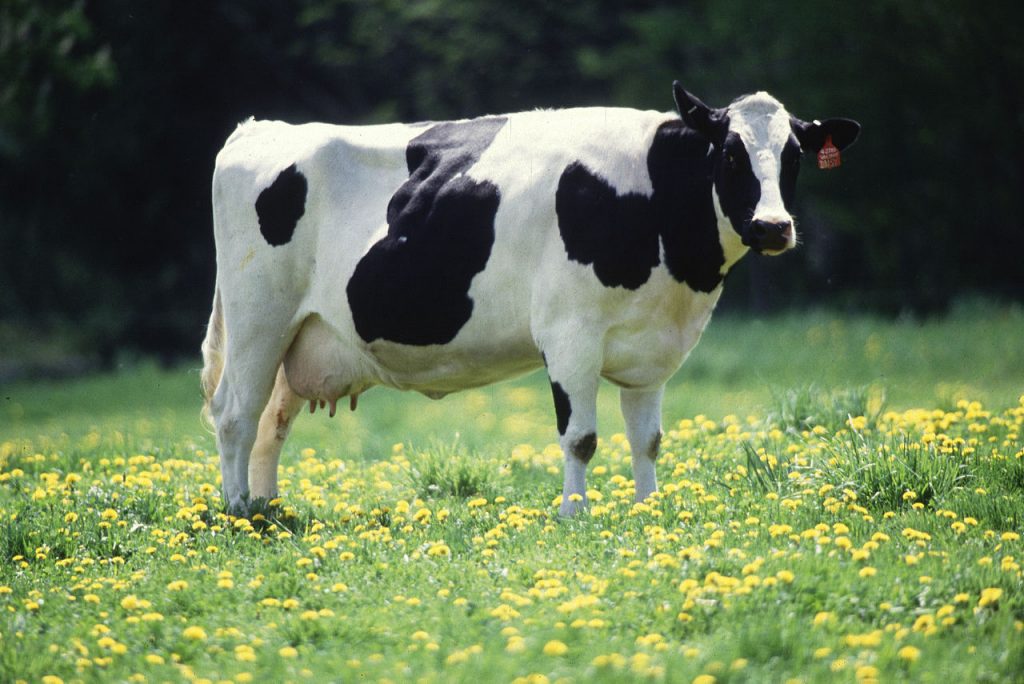Why Farmers Treat Cows Like People


Pictured above is a cow. That particular breed of cow is a Holstein-Friesian, the breed of cow which is responsible for most of the milk produced in the United States, the UK, and other places as well. (Of the 9 million dairy cows in the U.S., according to the Holstein Association USA, 90% are Holsteins.) And maybe, the cow above has a name — Bessie, Elsie, Daisy, Gladys, Madam Moo Moo, it really doesn’t matter. Any name will do.
To see why, we need to peruse a 2009 paper out of Newcastle University in England, co-authored by professors Catherine Douglas and Peter Rowlinson of the college’s agricultural school. Their study, available here, explored the relationship between stock managers — the farm employees typically in charge fo the day-to-day operations of a milk cow herd — and the cattle for which they’re responsible. Cows, after all, aren’t machines that one can just turn on and off; they may have feelings, emotions, and moods. Drs. Douglas and Rowlinson wanted to better understand how stock managers perceived their herds, so they sent surveys to a bit more than 500 of these employees across the United Kingdom.
Along the way, the researchers asked a somewhat strange question: they wanted to know if the stock managers named their cows. Not “Cow 24801” or some ID number either, but something more personal. The result, per National Geographic, was that about half — 46% — of stock managers said that, yes, they had Bessies and Daisy, not just cows. The reasons why, we don’t know, but the result — well, it was a smart move.
The researchers noticed a trend — regardless of farm size or herd size, herds of named cows, on average, produced more milk than their unnamed counterparts elsewhere. Scientific American summarizes just how big: “Dairy farmers who reported calling their cows by name got 2,105 gallons (7,938 liters) out of their cows, compared with 2,029 gallons (7,680 liters) per 10-month lactation cycle.” That’s almost a 5% uptick, which isn’t a ton, but it adds up.
The researchers aren’t quite sure why this happens, but they have their guesses — they think giving a cow a name (and using it) is a proxy for kindness. Dr. Douglas told NBC News that “if you call a cow by name, it indicates that perhaps you talk to her more, perhaps you consider her more of an individual, perhaps you have more of a one-to-one relationship.” Cows which are treated more like people, they surmise, are less stressed and more likely to produce more milk.
And that’s not all. The duo also thinks that the benefits of a strong farmer-cow relationship can go beyond milk production. While the study didn’t address this second point with any academic rigor, Douglas noted that farmers who had a strong personal connection with their individual cows may be better able to avoid cow-related injuries, as happy cows who know their milker are less likely to strike. Douglas’s most important data point? Herself. She told NBC News: “Personally, I have had a black eye and broken ribs from milking.”
Bonus fact: If you visited the White House about a century ago — from 1910 to 1913 — you would have been greeted by a cow. Then-President William Howard Taft had a pet cow which grazed freely on the White House lawn. And yes, the cow had a name — Pauline Wayne. Miss Wayne, as she was sometimes called, was, to date, the last Presidential cow; none of Taft’s successors have wanted a pet bovine. (Wayne was not, however, the only Presidential cow; she had a predecessor in the Taft administration named Mooley Wooly, but the Mooley wasn’t able to produce enough milk for the First Family’s liking.)
From the Archives: Cow Magnets: Why we feed magnets to cows.
Related: Bessie the Cow. Also, a Zorvo Milking Machine, in case you have a cow and want some milk.
